by Morten Rand-Hendriksen
An Event Apart Online Together – Human Centered Design
2:45pm Central
Senior Staff Instructor @ LinkedIn Learning, Amateur Photography, Teacher of Interaction Design
He has a degree in Philosophy and a long history in the tech industry.He believes need a tech industry centered around ethics.
“Trust is the currency of interactions.” – Rachel Botsman, Trust Fellow, Harvard University
Trust between family and friends and neighbors is built up over time and interactions. ‘I know I can trust my neighbor to watch over our house when we aren’t home, I know I can trust my friend Rachel to keep our private conversations private..’ But everyday way put our trust in people we don’t know, and that we may never interact with.
In August 2016 how much we depend on each other became very clear to Morten and his wife. Their son Leo was eager to explore the world and arrived 6 weeks early. The first few hours of Leo’s life were filled with tests, and hours of time under a blue light. The time in the neonatal unit was filled with stress but he sat down with a doctor who explained what to expect moving forward.
“We will do everything we can to give him the capability to live a full life.” – Doctor
“Do what you think is right doctor, we trust you completely.” – Morten and his wife.
Entering into a hospital to receive care is one of the more high trust actions we can make as people. Why do we trust these perfect strangers with our lives? ETHICS.
We live in a society rooted in common ethics. When we interact with people we don’t know we choose to believe they adhere to those ethics in their interactions with us. In the case of professionals like doctors, structural engineers, lawyers, politicians, there is an additional layer of trust added by professional ethics. These ethics hold each practitioner accountable for their work so when something goes wrong we can ask ‘were they in breech of their ethics?’ and if so they can be deemed untrustworthy and lose their right to practice.
Ethics is woven into the fabric of our society.
He and his wife watched over their son in the NICU for 3 weeks. A nurse came up to him and asked ‘how do social network sites make money?’ Morten told her to imagine a giant blue monster
We know a lot fo stuff on the internet is not built with the best interest of the user online. That means that when ‘essential workers’ come to the internet with their private and financial and health information they WANT to trust us but they are starting to suspect that trust is misplaced.
The trust of the online world is eroding. In the wake of eroding trust comes government interventions. WE HAVE WORK TO DO. We need to start acting like the professionals we want to become, and the first step is to embrace ethics as part of our practice.
To have a meaningful conversation about ethics, we need to define our terms. We use morals and ethics all the time in our day to day language. In the tech world, conversations about ethics have gathered momentum. In the new pandemic, we’re having conversations about ethics with each other every day.
Moral Philosophy 101: Pandemic Edition
Morals are our personal internal judgements about what is right or wrong. They are rooted in culture, religion, politics, and other social belief systems. They are deeply personal to each of us.
Ethics are theories, tools, methods, and frameworks we create as a society that allow us to judge what is wrong. They are external, non-specific frameworks we agree upon that allow us to create rules, regulations, codes of ethics, and laws.
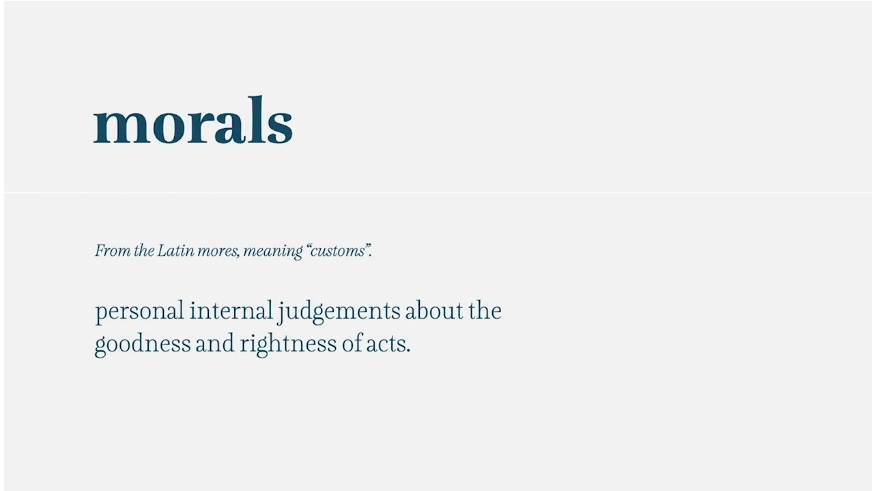
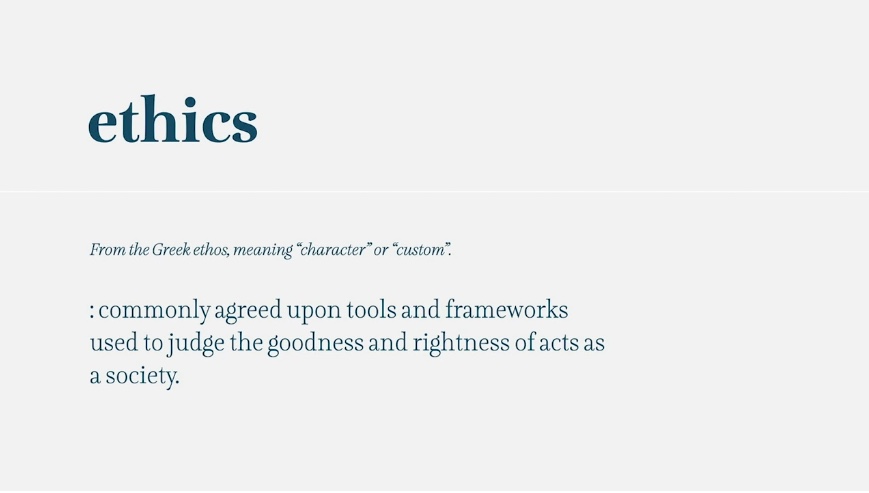
-
internal
-
personal
-
individual
-
external
-
community based
-
societal

As a society, we need to make rules on how we interact with each other. In some regions, masking is recommended and the vast majority of people wear masks to protect others. In other regions, masking is mandatory – in those regions the ethics say society has a moral obligation to protect all people and require the use of masks. In other regions, masking is voluntary and there are no official recommendations. The ethics of those regions puts personal freedoms first and views the imposition of masks as a violation of that belief.
This is why ethics is complicated.
How do we as individual moral actors establish and agreed upon framework?
How do we as people know what is right or wrong? Ethics is a practice.
How do we build ethics into our design and development practice? How do we as designers, developers, and creators think and act?
We must rediscover what the web is all about. The web is an information publishing network. The web in its simplest form gives us the capability to share our thoughts and creations with the world, and access the thoughts and creations of other people. Web design at its core is capability centered design.
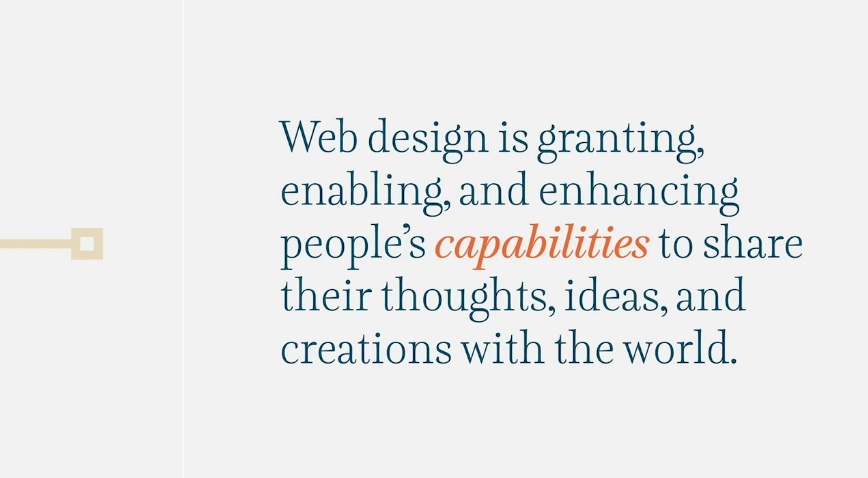
“Noe som skurrer” – it refers to the sound you hear when an engine isn’t working quite right.Is the like button in social media ethical? No, we know it’s addictive and the way it’s used to profile users and
Human centered design being implemented without serious consideration and care opens the door to what he calls design instrumentalism. The human becomes the instrument through which the design works to achieve the goal of the designer or their employer.
Human Centered Design is a good design principal, but from an ethics standpoint it isn’t sufficient. It needs ethics added into it.
Design is inherently POLITICAL. Designers have been talking about the political implications of design for at least 100 years.
“If a thing is designed to kill you, it is by definition bad design. You are responsible for what you put into the world and how it affects the world.” – Mike Monteiro
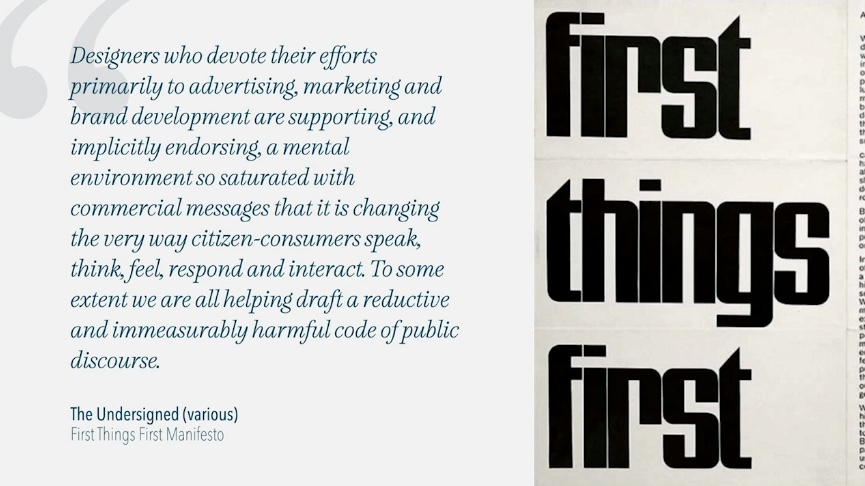
Capability-Centered Design
Applying ethical principles to decision making at every level of your practice. Actively rooting everything you do in ethical principles to make better solutions that work for everyone.There is a term to describe a true-north of ethics: Human Flourishing. Morten thinks this should be the true North for web design as well.
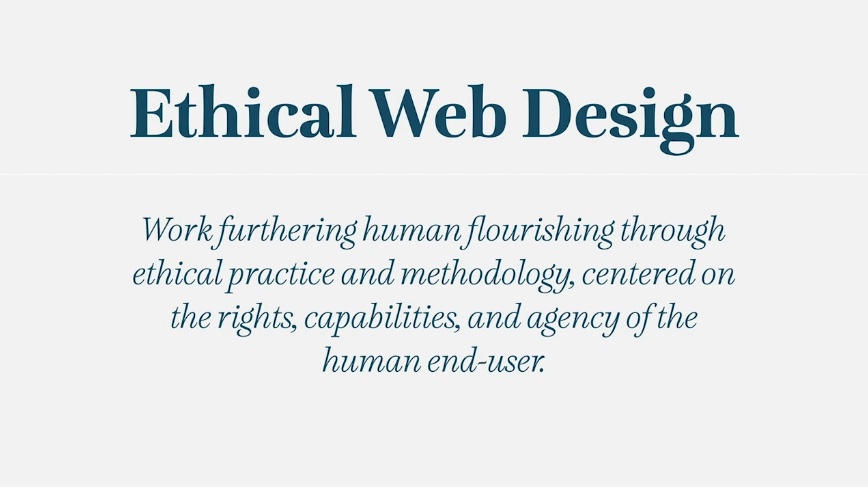
We’re not starting from scratch with ethics. We’ve refined moral philosophy down to 3 main branches:
Utilitarianism
The doctrine that actions are right if they are USEFUL or FOR THE BENEFIT OF THE MAJORITY. This is built into the core of design, design language, and the entire tech sector. ‘Good design’ is design that benefits the majority. You can see the issue here because who defines the majority? what about everyone else? We see this issue in the tech sector all the time – accessibility is sidelined for fancy user interactions.
-
- Focus on the utility of a design while ALSO including those outside the majority user group.
- Say no to facial recognition because
Virtue Ethics
The oldest and most unfamiliar to us. The normative ethical position that emphasize an individual actor’s character. “Virtue Ethics judges the goodness and rightness of an act based on whether it is rooted in a virtue the actor wishes to possess, even if the act itself is not a virtuous one.” This sounds circular because it is.
-
- A virtue in this context is a property defining and describing a person.
- Is this decision that someone who is honest and just and humble would make?
- How do we as a community agree upon our virtues?
- How do we avoid a deeply conservative cage where we can only do things someone else has done before?
- We need to challenge our ideals and idols and best practices. If we aim to make ethical decisions about web design, our virtues need to reflect the diversity of our community and our audience. That doesn’t just mean brining women and people of color and the full spectrum, but making them first rate citizen of our teams, our processes, our systems, and everything we do.
Duty Ethics
The normative ethical position that judges the morality of an action based on RULES. Most accurately described by the categorical imperative: “Act in the same way you’d want every other person to act in the same situation.” You make decisions because you think they are the right ones, and in doing that you’r also saying everyone else should also make those same decisions. Duty ethics tells us we should build privacy into our designs because everyone should build privacy into their designs.
-
- “Ought doesn’t always mean can.”
- Duty ethics are deeply rooted in our values, and our values are a gateway to subjective moral relativism.
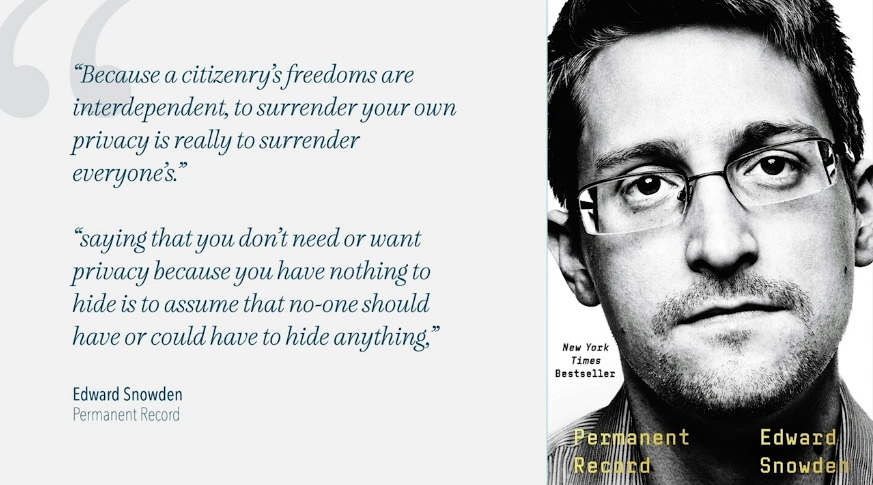



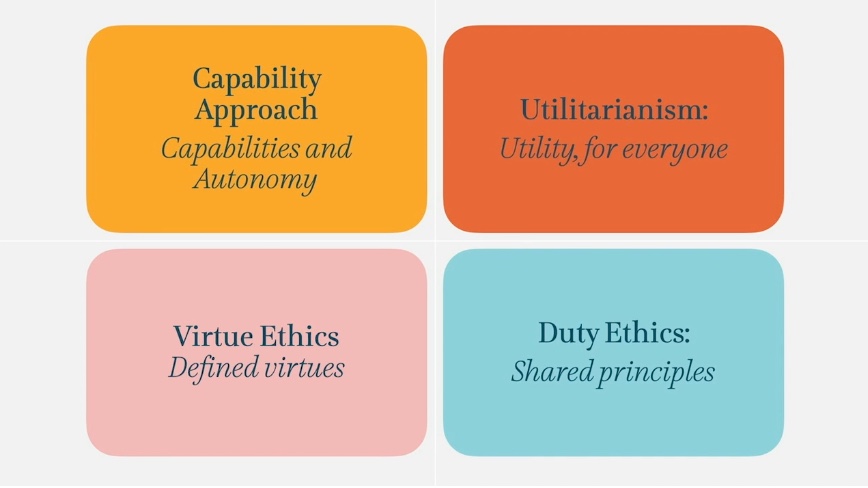
Start with Capabilities, then move to Utility, then to Duties, then to Virtues, then back to Capabilities again.
Remember, the being part is about making ethical reflection part of your daily personal and professional practice. The 4 Corners Approach is your guide as you start exploring this idea.
We’re all sitting here thinking ’this stuff is HEAVY, and not very applicable to what I do…’ Morten feels us, he’s spent the last 20 years of his life trying to embody the BEING part. This is a practice the same way meditation is a practice. It takes time, dedication, trial and error.
There’s also a good chance that you’re in a work situation that makes you feel like you’re a cog in a mindless machine. This ‘being’ part is something we have to do together, and it will take time. It’s also how we build TRUST.
WE, ALL OF US TOGETHER, HAVE WORK TO DO.
The good news is there is also a ‘doing’ part, and this part is immediately applicable. Let’s explore how to apply ethics in your design practice.
The Core Capability Framework
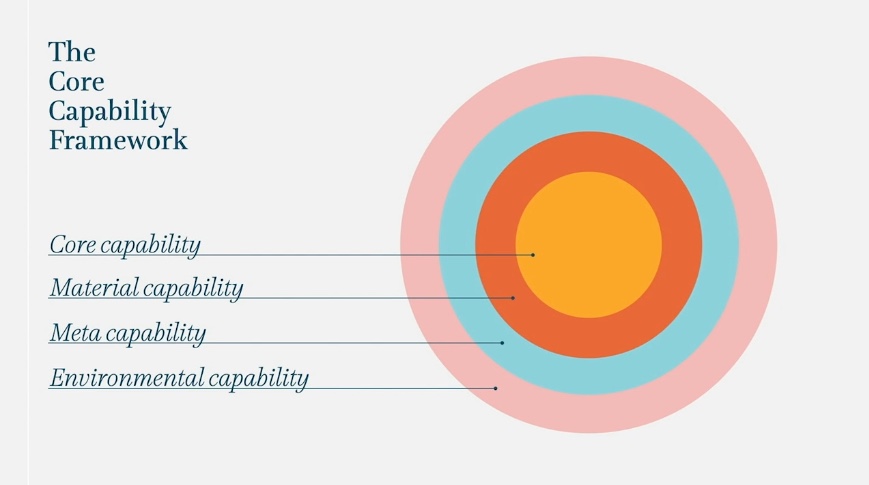
Core capability
Material capability
Meta capability
Environment capability
The 4 Corners Approach and the Core Capability Framework make up what Morten calls Capability Centered Design. This is what practical ethics for a modern web developer can look like. This ethical practice will help you do work furthering human flourishing.
This also gives you an actionable framework to take on all the sticky ethical issues the arise in web design projects.
Trust is the currency of interactions, and it is the currency we as web designers need to invest in.
He hears, ‘but Morten, there is ALWAYS a person who is desperate enough to do the unethical thing… so even if I don’t do it, someone else will.’ This is the problem of evil, and it’s not a problem he can solve, but we can make it less relevant by being humble, accountable, self-aware, and being graceful to ourselves and our peers when we make mistakes.
We are human beings, we are far from perfect, but we can strive to be better.






0 Comments